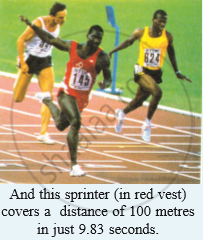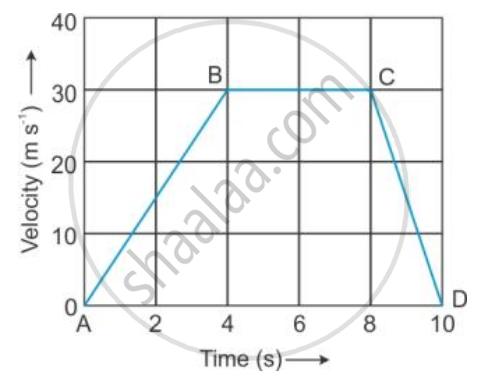Advertisements
Advertisements
Question
A speeding car changes its velocity from 108 kmh−1 to 36 kmh−1 in 4 s. Calculate its deceleration in
- ms−2
- kmh−2.
Solution
Initial velocity = u = 108 kmh−1
u = `108xx5/18` m−1
u = 30 ms−1
Final velocity = v = 36 kmh−1
v = `36xx5/18` ms−1
v = 10 ms−1
Time = t = 4 S
Deceleration = a = `("v"-"u")/"t"`
a = `(10-30)/4`
a = `-20/4` = −5 ms−2
a = `(-5xx3600xx3600)/1000` kmh−2 = −64800 kmh−2
APPEARS IN
RELATED QUESTIONS
During an experiment, a signal from a spaceship reached the ground station in five minutes. What was the distance of the spaceship from the ground station? The signal travels at the speed of light, that is, 3 × 108m s−1.
Under which condition is the magnitude of average velocity equal to average speed ?
A snail covers a distance of 100 metres in 50 hours. Calculate the average speed of snail in km/h.



Convert a speed of 54 km/h into m/s.
The speed of a moving object is determined to be 0.06 m/s. This speed is equal to :
A car travels the first 30 km with a uniform speed of 60 km h-1 and the next 30 km with a uniform speed of 40 km h-1. Calculate :
The total time of journey,
The average speed of the car.
The velocity-time graph of a moving body is given below in Figure

Total displacement.
What is the relation between distance and time when the body is moving with variable velocity?
Give two examples of uniform circular motion from your daily life.
Derive th e equation of motion.
S = ut+ `1/2` at2,
Where the symbols have their usual meanings
